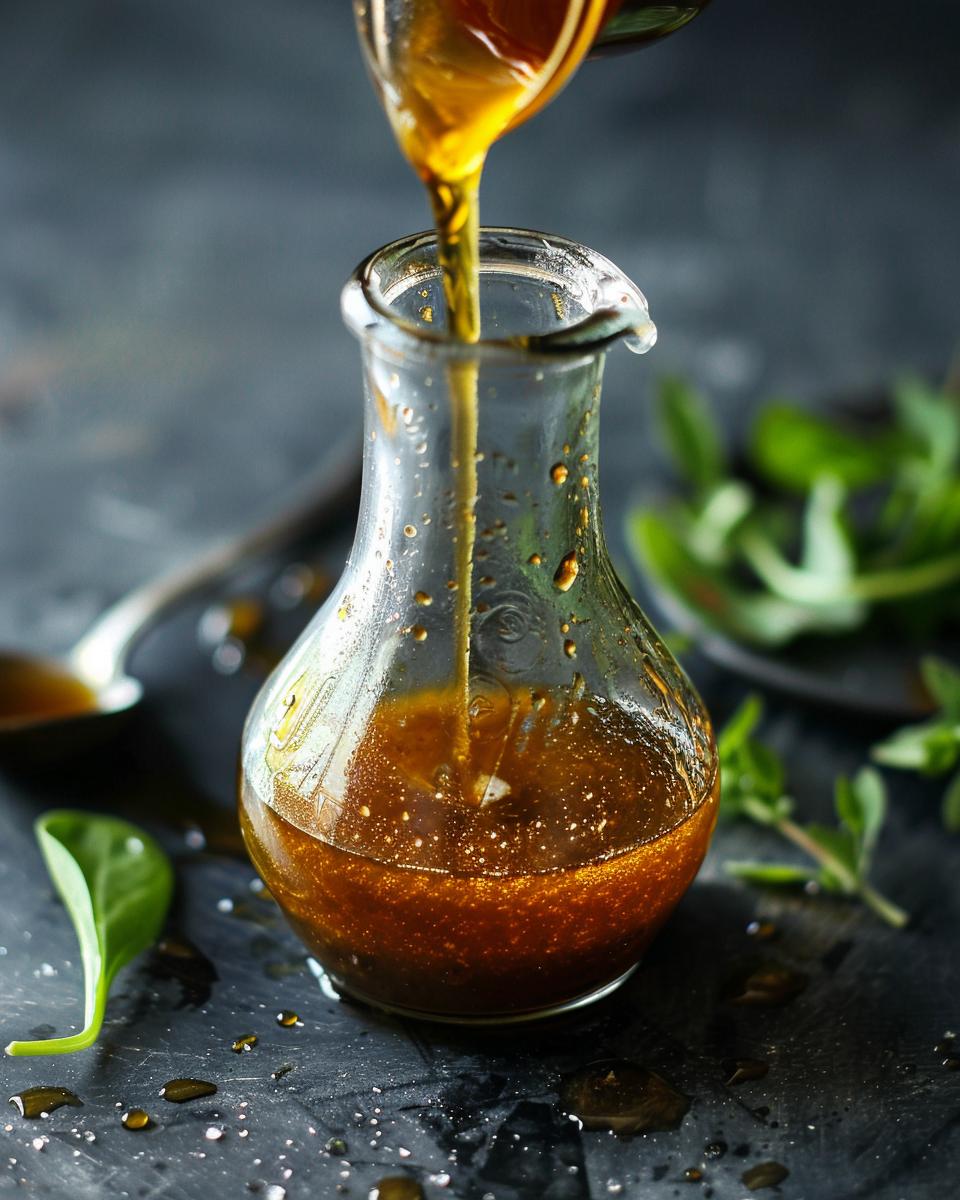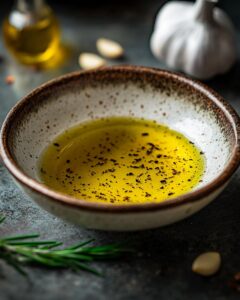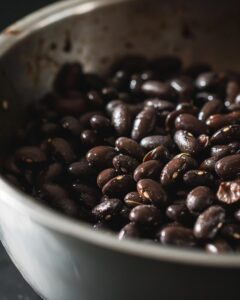French Dressing Recipe: Transform Your Salads with a Secret Twist
Looking to elevate your salads to a new level? You’re in the right place. This French dressing recipe will transform your greens with a secret twist that brings out bold flavors and vibrant colors. Trust us, your taste buds will thank you.
In this recipe:
- Simple ingredients, bold flavors
- Step-by-step instructions
- Tips for customization
- Storage and serving suggestions
Have you ever wondered how to make your salads more exciting? This recipe is the answer. With just a few ingredients, you can create a dressing that not only tastes amazing but also adds a touch of elegance to any meal. For those who enjoy experimenting, you can also try our Oyster Dressing Recipe and see how it transforms your holiday meals.
Moreover, this dressing is versatile. It pairs well with various salad greens, grilled meats, and even as a dip for veggies. If you love bold flavors, you might also enjoy our Chipotle Mayo Recipe. It’s another surefire way to elevate your meals instantly.
Ready to get started? Let’s dive into the recipe and discover how easy it is to make this classic French dressing at home. Your salads will never be the same again!

Who Can Make This Recipe, Difficulty Level, What You Need
Anyone can make this easy French dressing recipe, whether you’re a beginner or an experienced cook. The process is very straightforward, making it accessible to all skill levels. If you’re wondering how to make French dressing, you’ll be pleased to know it requires minimal equipment and effort.
Minimal Equipment Required
For this quick homemade French dressing, you’ll need just a few basic kitchen tools:
- A blender or food processor
- Measuring cups and spoons
- An airtight container for storage
This simplicity makes it a simple French dressing recipe that’s perfect for quick meal preparations. You don’t need any fancy gadgets or extensive culinary knowledge. Just gather your ingredients, blend them together, and you’re done!
The difficulty level is easy, making it ideal for those who want to whip up a delicious dressing without spending too much time in the kitchen. Even if you have a busy schedule, you can still enjoy homemade dressing with this recipe.
For more dressing ideas, check out this Homemade French Dressing Recipe from Culinary Hill. It’s a great resource for expanding your dressing repertoire and adding more variety to your meals.
In summary, this easy French dressing recipe is perfect for anyone who loves fresh, homemade flavors. With minimal equipment and an easy-to-follow process, you’ll have a delicious dressing ready in no time. So why not give it a try and elevate your salads today?
The Ingredients Needed to Make Classic French Dressing
Now that we’ve covered the minimal equipment required, let’s dive into the heart of this recipe: the ingredients. Choosing the right ingredients is crucial to achieving the perfect balance of flavors in your traditional French dressing. Whether you’re a novice or a seasoned chef, these ingredients are easily accessible and straightforward to work with.
Essential Ingredients
- 1 cup (250 ml) vegetable oil
- 1/2 cup (125 ml) white vinegar
- 1/4 cup (60 ml) water
- 2 tablespoons (30 ml) Dijon mustard
- 2 tablespoons (30 g) granulated sugar
- 1 teaspoon salt
- 1/2 teaspoon ground black pepper
- 1/4 teaspoon paprika
- 1/4 teaspoon garlic powder
- 1/4 teaspoon onion powder
- 2 tablespoons (30 ml) chopped fresh parsley
The core of this traditional French dressing recipe includes vegetable oil, white vinegar, and Dijon mustard. These ingredients create the base of our dressing, offering both tanginess and creaminess. But the magic lies in the details, like the paprika and fresh parsley, which add depth and a burst of freshness.
Want to customize your dressing? Try adding a bit of hot sauce for a spicy kick or experimenting with different herbs like tarragon or dill. Fresh ingredients are key; they make a noticeable difference in flavor. So, whenever possible, opt for fresh parsley over dried.
This recipe is versatile. For a creamy French dressing, consider adding mayonnaise. It blends seamlessly, creating a richer texture. Whether you prefer a classic or a creamy version, using high-quality and fresh ingredients will ensure your dressing stands out.
Now, with your ingredients gathered, you’re ready to move on to the next step. Let’s mix these elements together and create a dressing that will elevate any salad.

Step-by-Step Guide on How to Make French Dressing
Now that you’ve gathered all the necessary ingredients, let’s dive into the step-by-step guide on how to make French dressing. This guide will walk you through the process, ensuring you achieve a smooth, flavorful dressing every time.
-
Gather and Prepare Your Ingredients:
Before you start, make sure all your ingredients are measured and ready to go. This will make the process smoother and more efficient.
-
Combine Ingredients in a Blender:
In a blender or food processor, combine the vegetable oil, white vinegar, water, Dijon mustard, sugar, salt, black pepper, paprika, garlic powder, and onion powder. Blend on high speed for about 10 seconds. The goal is to achieve a smooth, well-combined mixture.
-
Adjust Seasoning to Taste:
Taste the dressing after blending. If you prefer a tangier flavor, add a bit more vinegar. For a sweeter touch, add a little more sugar. Adjust the spices as needed to suit your taste.
-
Chill the Dressing:
Transfer the dressing to an airtight container and refrigerate for at least 30 minutes. Chilling allows the flavors to meld together, enhancing the overall taste.
-
Add Fresh Parsley and Serve
Just before serving, stir in the chopped fresh parsley. This adds a fresh, vibrant touch to your simple French vinaigrette. Give the dressing a good shake or stir before using to ensure it’s well-mixed.
Enjoy your homemade French dressing on salads, as a marinade, or even as a flavorful dip. Experiment with the ingredients to find your perfect balance, and relish the compliments you’ll receive for your culinary skills!
Serving and Storing Ideas and Tips
Now that you’ve mastered the step-by-step guide to making your French dressing, it’s time to explore the best ways to serve and store it. This recipe is perfect for all levels, requiring minimal cooking knowledge or experience. Let’s dive into some serving suggestions for French dressing and handy tips for storing homemade French dressing.
First, ensure your dressing has a smooth, creamy texture. Blending the ingredients properly is key. As you blend, taste and adjust the seasoning. If you prefer a tangier flavor, add a touch more vinegar. For a sweeter note, a bit more sugar will do the trick.
Chill for Enhanced Flavors
Before serving, allow the dressing to chill in the refrigerator for at least 30 minutes. This step enhances the flavors, making your French dressing for salad even more delicious. The cold temperature melds the ingredients, resulting in a well-balanced taste.
When serving, consider these ideas:
- Toss it with fresh greens, cherry tomatoes, and croutons for a classic salad.
- Drizzle it over grilled chicken or shrimp for a tasty protein boost.
- Use it as a dip for vegetable sticks or even as a spread for sandwiches.
As for storing homemade French dressing, keep it in an airtight container in the refrigerator. This will maintain its freshness for up to 5 days. Remember to give it a good shake before each use, as the ingredients may separate over time.
For longer storage, you can freeze the dressing. Simply place it in a freezer-safe container, leaving some space at the top for expansion. Thaw it in the refrigerator or at room temperature before using. This way, you always have a batch of delicious French dressing ready to go!
With these serving and storing tips, you’re all set to enjoy your homemade French dressing in various delightful ways. Happy cooking!

Pro Tips for Perfecting Your French Dressing Recipe
- Always use fresh ingredients for the best flavor.
- Blend the dressing until smooth for a silky texture.
- For a thicker dressing, add a tablespoon of mayonnaise.
- Adjust the seasoning after blending to suit your taste.
- Chill the dressing for 30 minutes to enhance the flavors.
- Experiment with herbs like dill or tarragon for unique flavors.
- For a spicy kick, add a teaspoon of hot sauce.
- Store in an airtight container to maintain freshness.
- Shake well before each use to mix the ingredients.
- Use high-quality vegetable oil for the best results.
FAQ – Ingredient Replacement Options, Money-Saving Tips, Relevant Tips
When making French dressing at home, you might have some questions about ingredient substitutions, cost-effective methods, and tips for getting the best results. Here are some frequently asked questions and their answers to help you out!
Ingredient Replacement Options for French Dressing
Q: Can I use a sugar alternative in my French dressing?
A: Absolutely! You can replace granulated sugar with a variety of sugar alternatives such as honey, agave syrup, or stevia. Honey and agave syrup will add a slight flavor difference, while stevia will keep it more neutral. Adjust the amount to taste, as these substitutes can vary in sweetness.
Q: What can I use instead of vegetable oil?
A: If you’re looking to avoid vegetable oil, try using olive oil or avocado oil. Both have a rich flavor and are healthier options. Just keep in mind that they may alter the taste slightly due to their distinct flavors.
Money-Saving Tips for French Dressing
Q: How can I make French dressing on a budget?
A: To save money, consider buying ingredients in bulk. Items like vinegar, oil, and sugar are often cheaper when purchased in larger quantities. Additionally, using dried herbs instead of fresh ones can be more cost-effective without sacrificing much flavor.
Q: Are there any budget-friendly alternatives to Dijon mustard?
A: Yes, you can use yellow mustard as a more affordable substitute. While it has a slightly different flavor profile, it will still provide the tanginess needed for a good French dressing. Another option is to make your own mustard from mustard powder and water.
Q: Is it cheaper to make French dressing at home or buy it?
A: Making French dressing at home is generally more cost-effective in the long run, especially if you often use it. Plus, you have control over the ingredients, which can lead to a healthier and more delicious dressing.
Relevant Tips for Making French Dressing
Q: What are common pitfalls to avoid when making French dressing?
A: One common mistake is over-blending the dressing, which can make it too thick or give it an unpleasant texture. Also, be cautious with the amount of vinegar and sugar; too much can overpower the dressing. Always taste and adjust the seasoning as you go.
Q: How can I ensure my French dressing is perfectly balanced?
A: To achieve a well-balanced French dressing, start with the basic recipe and adjust to taste. Add ingredients gradually and taste frequently. Fresh herbs and high-quality spices can enhance the flavor, making your dressing stand out.
For more detailed recipes and tips, check out this Homemade French Dressing Recipe from Culinary Hill.












